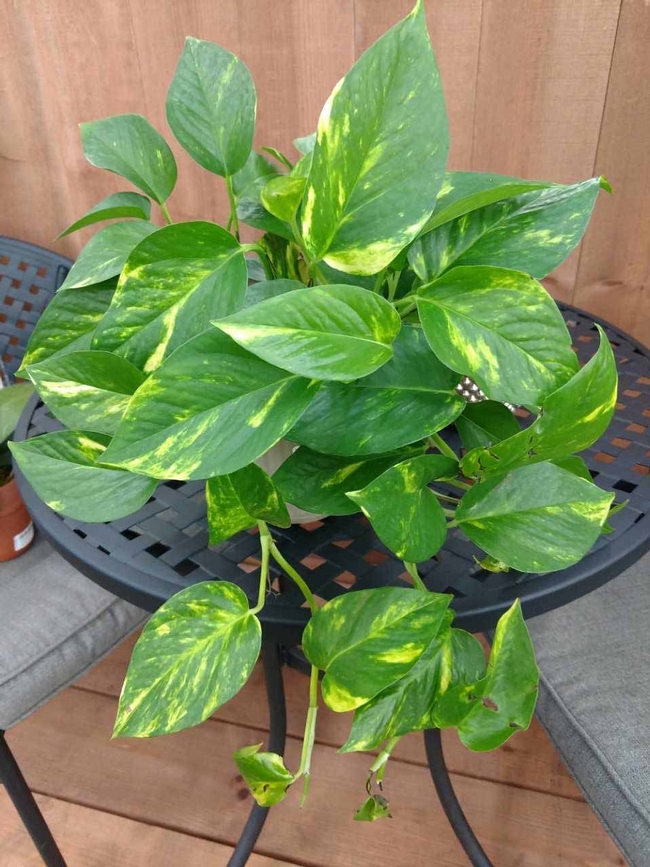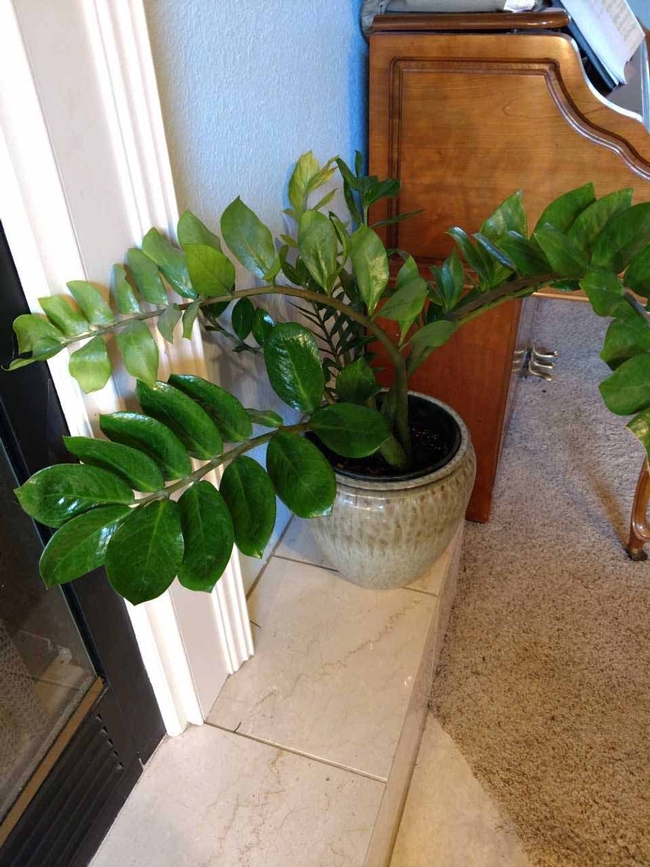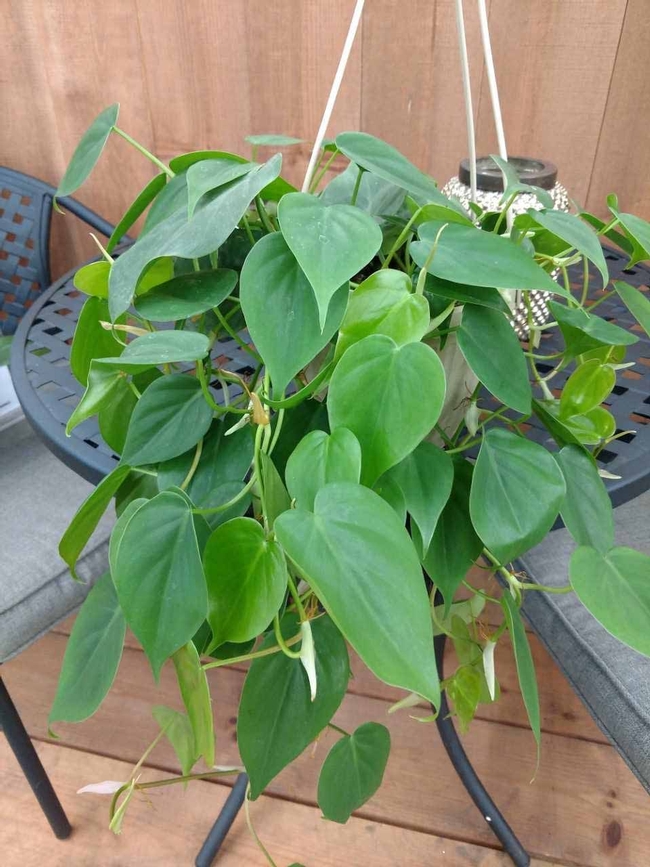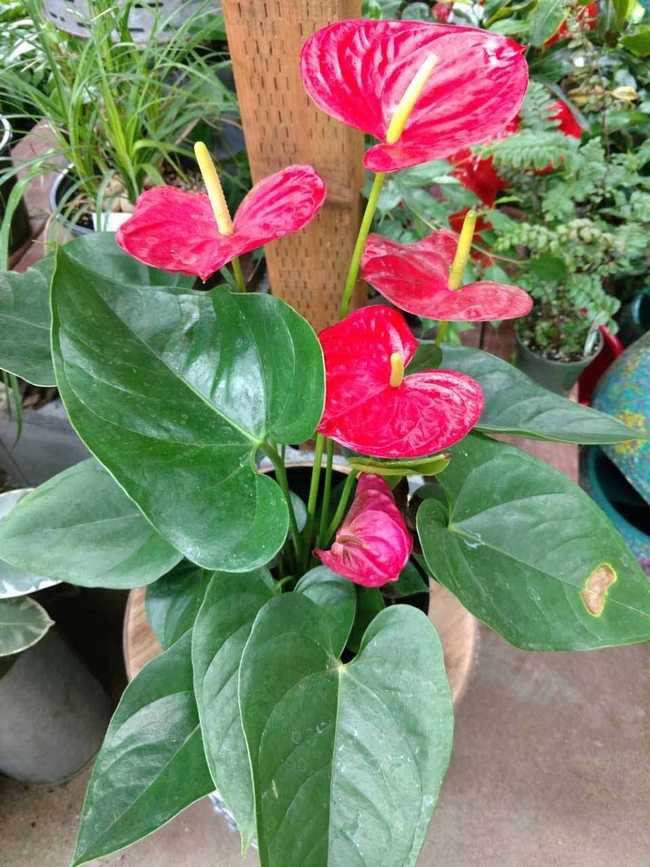By Emilee Fowkes Warne, UC Master Gardener of Butte County, February 2, 2018.

Understanding the four basic needs of all houseplants can not only give you the knowledge you need to care for these plants, but also help you to select an environment in your home where the right plant can survive and even thrive. The four basic needs of houseplants are:
- Sunlight
- Water
- Airflow/Humidity
- Supplemental Nutrients (fertilizer)

Water. Our home environments are typically up to 50% drier than what most plants prefer, so indoor plants can be surprisingly tricky to water. When the soil of a houseplant lacks adequate moisture, the soil particles will contract and pull away from the edges of the pot, allowing water to run down and out of the drainage holes without actually being absorbed. To avoid this, apply water around the base of the plant thoroughly until the pot feels significantly heavier and the water no longer runs directly from the soil surface straight out through the drainage holes. Salts will accumulate in potted plant soils from repeated watering and will cause leaf tip and marginal leaf scorch if the soil is not leached periodically. Prevent this by leaching salts from the pot by allowing water to flow through the soil and drain out. Empty the saucer after watering.

Airflow. Often overlooked, this is an important requirement for the over-all health of the plant and the prevention of indoor pests. It is important to place an indoor plant somewhere that will get regular air circulation, but no blasts of freezing winter air or stifling summer heat from a frequently-opened door. Plants require both carbon dioxide from the air for photosynthesis and oxygen for respiration, which is the basis for all growth processes. If they are placed in a dusty, forgotten, water-stressed location, they will struggle to thrive and become an appealing target for spidermites.
Air that blows out of central heating/air conditioning vents is especially dry and can interfere with leaf and flower growth if there is no added humidity, so avoid locating a plant directly in a vent's air flow. Humans prefer an indoor humidity of 20-30%, but plants, especially tropicals that are otherwise well-suited for the indoors, generally prefer 75-85% humidity. Placing the plant on a tray of pebbles with about an inch of water in the bottom should provide an appropriate amount of humidity around the plant even when overall household humidity remains low.

Supplemental Nutrients. An application of fertilizer—even just a few times a year or at a weaker dosage more often — can greatly improve the vitality of your houseplant. Fertilizer replaces the nutrients that a plant uses up in its lifecycle and cannot acquire naturally when confined to a pot. The type and composition of the fertilizer needed depends on the type and size of the plant. Always follow fertilizer directions closely and do not use more than the recommended amount. Do not apply fertilizer to a sick, weak, or wilted plant, as it can cause more stress and may kill the plant.
The following are tried-and-true houseplants:
Tough, easy-to-care-for houseplants for beginners: Snake Plant, also known as Mother-in-Law's Tongue (Sansevieria spp.); Cast Iron Plant (Aspidistra elatior); ZZ Plant, also known as Aroid Palm (Zamioculcas zamiifolia); Heartleaf Philodendron (Philodendron cordatum); and Pothos, also known as Devil's Ivy (Epipremnum aureum).
Reliable plants for indoor flowering: Moth Orchid (Phalaenopsis spp.); African Violet (Saintpaulia spp.); Flamingo Flower (Anthurium spp.); and Christmas Cactus (Schlumbergera spp.).
Houseplants with unique foliage: Rhizomatous Begonias (Begonia spp.); Norfolk Island Pine (Araucaria heterophylla); Wandering Jew (Tradescantia zebrina); and Swiss Cheese Plant (Monstera deliciosa).
Many of these plants will be discussed in greater detail in the next Real Dirt Column.